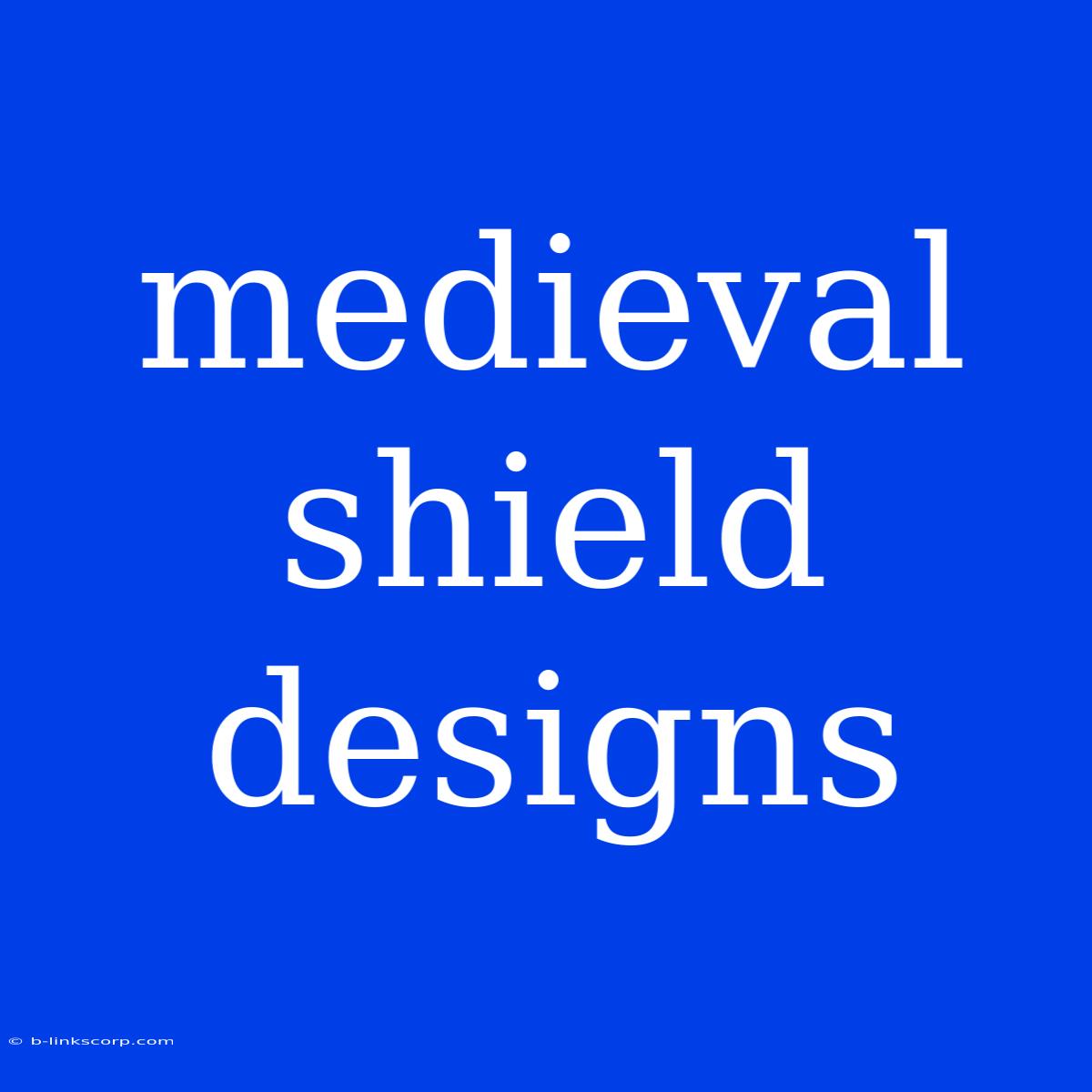Medieval Shield Designs: A Glimpse into the Past
Medieval shields were more than just defensive tools; they were works of art, reflecting the cultural and technological advancements of their time. From the simple kite-shaped designs of the early Middle Ages to the intricate heraldic shields of the later period, these protective devices played a crucial role in shaping the course of warfare and society.
The Evolution of Design
Early Medieval Shields (5th-10th Centuries):
- Kite-shaped: These simple shields were often made of wood and covered with leather or hide. Their shape offered protection against thrusting weapons but was vulnerable to blows from heavy weapons.
- Round: This design, adopted from the Romans, provided better coverage but was more difficult to wield in close combat.
- Materials: Wood, leather, and iron were common materials for construction.
High Medieval Shields (11th-13th Centuries):
- Norman Shield: This shield, often seen in the Bayeux Tapestry, was typically kite-shaped with a pointed bottom, offering greater defense against blows from above.
- Heater Shield: Its unique shape, resembling a heater, provided improved protection against slashing weapons and was easier to maneuver in combat.
- Materials: Stronger materials like iron and steel were increasingly used for construction, offering greater durability and protection.
Late Medieval Shields (14th-15th Centuries):
- Heraldic Shield: These shields were heavily decorated with coats of arms, signifying the wearer's lineage and status. This trend added a new dimension to warfare, where identity and pride became as important as physical defense.
- Pavise: This large, rectangular shield, often used by crossbowmen, provided broad protection and was sometimes used as a mobile defensive structure.
- Materials: Steel and metal plates became dominant, offering maximum protection against increasingly powerful weapons.
The Art of Decoration
Beyond their functional purpose, medieval shields were often adorned with intricate designs:
- Heraldry: Coats of arms, often emblazoned with symbols, provided a visual identity and helped to distinguish different soldiers on the battlefield.
- Religious Icons: Religious imagery, such as crosses or saints, offered spiritual protection and reinforced the belief systems of the era.
- Animal Motifs: Animals, often symbolizing power or bravery, were frequently incorporated into shield designs.
- Geometric Patterns: Intricate geometric designs added visual appeal and served as a form of artistic expression.
Significance and Legacy
Medieval shield designs offer a fascinating glimpse into the past, reflecting the social, cultural, and technological advancements of the era. Their evolution from simple defensive tools to intricate works of art showcases the ingenuity and craftsmanship of medieval artisans. Today, these designs continue to inspire artists, historians, and enthusiasts, providing a tangible link to the fascinating world of medieval warfare and culture.

